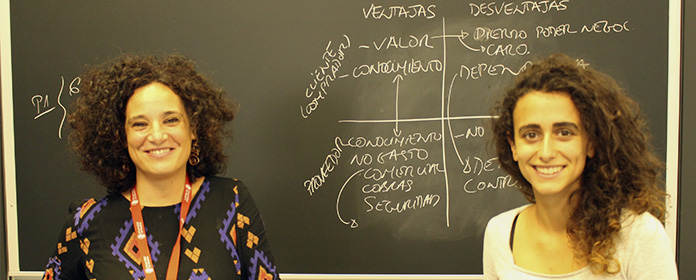News
LATEST NEWS AND EVENTS FROM THE SCHOOL OF ENGINEERING
It's our turn to be Smart cities, with all its letters
Marta Iturriza and Cinta Lomba. Professors of Tecnun and researchers of the group Tecnun Resilience, of the department Industrial Organization.

Cities have been, and continue to be, core topic in the global pandemic we live in, part of the problem and part of the solution. The SARS-CoV-2 virus has highlighted vulnerabilities and clear needs to build more inclusive, green, flexible, stable and creative urban environments. The future will bring other situations that will put us at test as the urban population that we are. So now it is up to us to be smart and learn, we must be SMART with all its letters.
World Cities Day is celebrated on October 31 under the slogan "better city better life". Seven years ago the UN established this day to give visibility to the role core topic that cities play in the well-being of today's eminently urban society. Cities manage to bring together and connect different spaces, services or cultures, which make urban environments dynamic, exciting and vibrant, but at the same time vulnerable. Urban populations are more dependent on services such as electricity, water, transportation, communications and food, but they also demand open spaces that connect citizens with nature. Cities do not want to be just gray in terms of infrastructure, but also blue and green.
Our cities must face day-to-day challenges related to housing, climate change, infrastructure, food, health, Education, work or security; but also crises of great magnitude such as this global pandemic. Events like this make the perspective change, and the city rethink and look for ways to ensure the welfare of its inhabitants.
UNESCO defines a Smart city as a city with the capacity to ensure the well-being of its citizens. The Smart city concept is related to technology, smart buildings and connectivity. But a Smart city is also a Sustainable, Environmental, Adaptable, Resilient and Transformative city. The current pandemic presents an opportunity to transform cities.
With the S for Sustainable, Smart cities invite to move forward taking into account the different dimensions of the city: social, healthy, safety and economic. A Smart city is an inclusive city that takes into account the different cultures present in the citizenship and connects, improves and encourages them. This development must be done in a comprehensive, integrated and coherent way that prepares cities to face future challenges from more sustainable approaches, using zero emission technology for transport, innovative business models, Economics circular or green infrastructures. For example, in Copenhagen, in the Nordhavn district, sensors have been installed in buildings to collect energy consumption data, analyze their use and study improvements.
With the M for the Environment, seeking a balance between services, infrastructure and green spaces. The constraints imposed by SARS-CoV-2 highlight aspects such as the negative impact of cities on the environment. In this regard, air quality indicators in cities around the world improved considerably during the quarantine. A Smart city, such as Amsterdam or Vitoria, promotes the use of sustainable transport, and is designed for a more rational mobility in which distances are shortened. Aspects such as distributed urbanization, good communication networks and appropriate transport infrastructures will facilitate this.
With the A for Adaptable, the Smart city has the ability to Adapt to both expected and unexpected situations. In the case of the pandemic, the adaptation of urban environments has been core topic to better respond to the crisis. Infrastructures such as roads or buildings, both public and private, have been used for purposes other than their intended purpose design. Many Spanish cities have pedestrianized roads to avoid crowds or converted hotels into hospitals during the pandemic.
With the R for Resilient, a Smart city not only adapts to situations that arise, but is also able to mitigate and maintain a state of normalcy. To do so, urban environments must have appropriate mechanisms and resources to successfully cope with crises. That is, to have reliable and robust infrastructures and services that guarantee service continuity and recovery. As well as promote green infrastructures and strengthen and shorten supply chains by favoring local consumption. For example, Rotterdam is developing a thermal network that connects several buildings in the city in order to optimize the distribution of heat and cold between them, parking lots with smart charging or efficient and intelligent street lighting.
Finally, with the T of Transforming, Smart cities serve as a point of meeting, acting as an axis in network with other cities and towns. Its challenge resides in making this transforming effect inclusive and favoring equal opportunities and respect and connection with the environment. The pandemic revives the discussion about cities and their connection with nature and the need for healthy spaces that promote more sustainable lifestyles.
